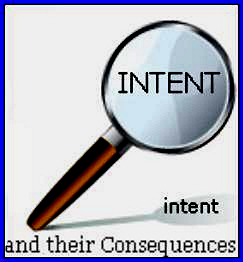Trevor Todd and Jackson Todd have handled contested estates including obtaining interim distributions of estate for over sixty comb9ined years.
INTERIM DISTRIBUTIONS IN ESTATES
The court retains a general jurisdiction over the actions of executors/trustees and will normally require that a trustee discharge his or her duties with good faith, and with the standard of care of a reasonable and prudent person of business.
However, where a trustee is granted powers which are to be exercised at his or her sole discretion, the court traditionally would not interfere, unless the trustee had not turned his or her mind to the exercise of the discretion, or they had acted unfairly or in bad faith.
The case of Re: Blow Press Ltd. v U.S.W.A. (1977) O.R. (2d) 516 held that the court had jurisdiction to intervene in the exercise of a discretion by trustees in three situations:
1) a mala fide exercise of such a discretion;
2) a failure to exercise such a discretion; or
3) a deadlock between trustees as to the exercise of such a discretion
It is not uncommon for a will or a trust to be drafted with adjectives giving trustees “absolute,” “uncontrolled,” or “full discretion” to trustees, to use their authority. The courts traditionally have not interfered unless they found mala fides with respect to its exercise of such discretion.
In recent years, however, there are now a number of estate decisions in British Columbia that have allowed for interim distributions in certain circumstances, when the trustee is refusing to distribute under their discretion.
WESA
While WESA does not specifically allow for interim distributions of intestate estates, beneficiaries are no longer required to wait one year from the intestate person’s death to distribute the surplus of the personal estate, as was previously required by section 74 of the Estate Administration Act.
The executor can now distribute all forms of assets after 210 days have passed since the issuance of the representation grant, provided that no proceedings have been commenced, which might affect the distribution of the estate.
A new provision, section 155 (2) WESA prohibits a personal representative from distributing the estate after the 210 day waiting period without a court order if:
1) proceedings of been commenced as to whether a person is a beneficiary or intestate heir;
2) a variation claim has been brought; or
3) other proceedings have been brought, which may affect the distribution him.
INTERIM ESTATE DITRIBUTIONS GRANTED
Trustees generally have the right to exercise their discretion to refuse to make any interim distribution to the beneficiaries until their accounts are approved by the court, by way of a passing of accounts.
In Reznik v Matty 2013 BCSC 1346, an application was brought by three of four residual beneficiaries for an order directing distribution of $15,000 to each of them from the $50,000 held back in the estate. The executor of the estate was the fourth beneficiary, and it had been 13 years since the deceased will maker had passed away. The court held that the power given to the executor under the will to retain a portion of the estate did not displace the duty to distribute the assets.
In assuming general jurisdiction, Reznik was followed in 80 Wellesley St. East Ltd. v. Fundy Bay Builders Ltd., [1972] 2 O.R. 280 (C.A.), which stated at paragraph 282:
“As a superior Court of general jurisdiction, the Supreme Court of Ontario has all of the powers that are necessary to do justice between the parties. Except where provided specifically to the contrary, the Court’s jurisdiction is unlimited and unrestricted in substantive law in civil matters.”
The court reasoned that there was significant delay, and that the estate was of significant value and liquidity that the executors assent to the distribution was compelled, and thus the executor was ordered to pay $10,000 to each of the residual beneficiaries.
In Davis v Burns Estate 2016 BCSC 1982, the court held at paragraph 31 that the following criteria govern whether an interim distribution should be made:
a) the amount of the benefits sought to be distributed as compared to the value of the estate;
b) the claim of the beneficiaries on the testator;
c) the need of the beneficiaries for money; and
d) the consent of the residuary beneficiaries to the proposed distribution
In Davis v Burns, the applicant was 76 years of age and had been the deceased will maker’s common-law spouse for five years and had been friends with he and his wife for many years prior. The former spouse was bequeathed 20% of the assets of the estate (approximately $500,000).
The applicant had no funds and a negative monthly cash inflow. The court found that the other parties to the court action would not be prejudiced by an interim distribution to him, and so the court ordered an advance of $250,000, given his advanced age, and the will’s specific direction that he should “have fun” with the monies after her death.
Nykoryak v Anderson 2017 BCSC 1800 was a wills variation action that followed the criteria set out in Davis v Burns and ordered an interim distribution to each of the personal defendants from the estate funds in the amount of $50,000 each.
Each of the applications provided evidence of their financial need and hardship and the court found that the plaintiff’s security was still more than adequately protected from any award at trial.
In Re Zanrosso Estate 2021 BCSC 2928, the court commented that the new provisions of WESA did not directly address the possibility of court intervention, should an executor/trustee refuse or neglect to distribute the estate.
Counsel in this decision agreed that the court had general jurisdiction to order an interim distribution of estate assets and relied on Reznik v Natty as the authority.
The court found that it had authority to order a personal representative to make an interim distribution of an estate, further to its general jurisdiction and stating that such authority is discretionary and must be exercised in order to do justice between the parties.
The court referred to the criteria set out by the Court of Appeal in Hecht v Hecht 1991 BJ 3475, but stated that it was not an exhaustive list of potential considerations:
The court found that the factors to be considered by the court when deciding whether to exercise its discretion to grant leave to the executors include:
(a) the amount of the benefits sought to be distributed as compared to the value of the estate;
(b) the claim of the beneficiaries on the testator;
(c) the need of beneficiaries for money; and
(d) the consent of the residuary beneficiary to the proposes distribution.”
The court stated that since the legislator had not seen fit to expressly provide for interim distributions from an estate over the objection of the personal representative, that an order should only be made in exceptional circumstances, and with the burden on the applicant to justify the issuance of such an order.
In the case of Re Antonias Estate 2021 BCSC 2388, the court ordered an interim distribution where the applicants were the sole beneficiaries of the residue of the estate, sharing equally and were siblings ranging in age from 76 to 89 years of age, some of them with health issues, and some with concerns that they would pass away before the estate was distributed.
The executor did provide an offer to make an interim distribution, the same that was sought in the court order, but did so on the basis that a release would be signed and returned. The beneficiaries did not comply with the request to sign the release.
The applicants relied on the decision of Reznik v Matty and the quote of Austin v Beddoe (1893) that if an executor has assented to an interim distribution and the assets available to the estate after an interim distribution are sufficient to cover all outstanding liabilities, and had basically made that acknowledgement, it is appropriate to have assets released.
The court ordered the beneficiaries to indemnify the executor from any loss arising from the interim distribution in the event that there was an estate shortfall in assets verus liabilities.
The court ordered an interim distribution of $528,000 and noted that the estate holdback would be approximately $447,000 over and above executor’s fees of % 3.5.
CONCLUSION
Since approximately 2015, the British Columbia courts have been more willing to override the typical absolute discretion of a trustee as to whether or not to make an interim distribution. Historically, the courts would only interfere where there was mala fides on the part of the trustee before they would order a distribution of estate assets.
As the recent cases indicate, if there is evidence of an appropriate set of facts that “justice is done” by ordering an interim distribution, then the courts will seriously consider doing so.
Such evidence should consist of matters such as: inordinate delay, financial need, the advanced age of beneficiaries, holdback protection for the remaining beneficiaries’ interests, sufficient funds to pay future debts, with an indemnity from the beneficiaries in the event of a shortfall.
If such evidence is accepted by the court, then recent cases in British Columbia indicate that the court will give serious consideration to ordering an interim distribution of estate assets, if necessary over the objection of the executor/trustee.
As the court in the Zanrosso decision stated regarding the criteria set out by the Court of appeal in the 1991 Hecht decision – “this is not an exhaustive list.” This statement appears to indicate a greater willingness of the BC courts to order interim distributions of estate assets in appropriate circumstances.









